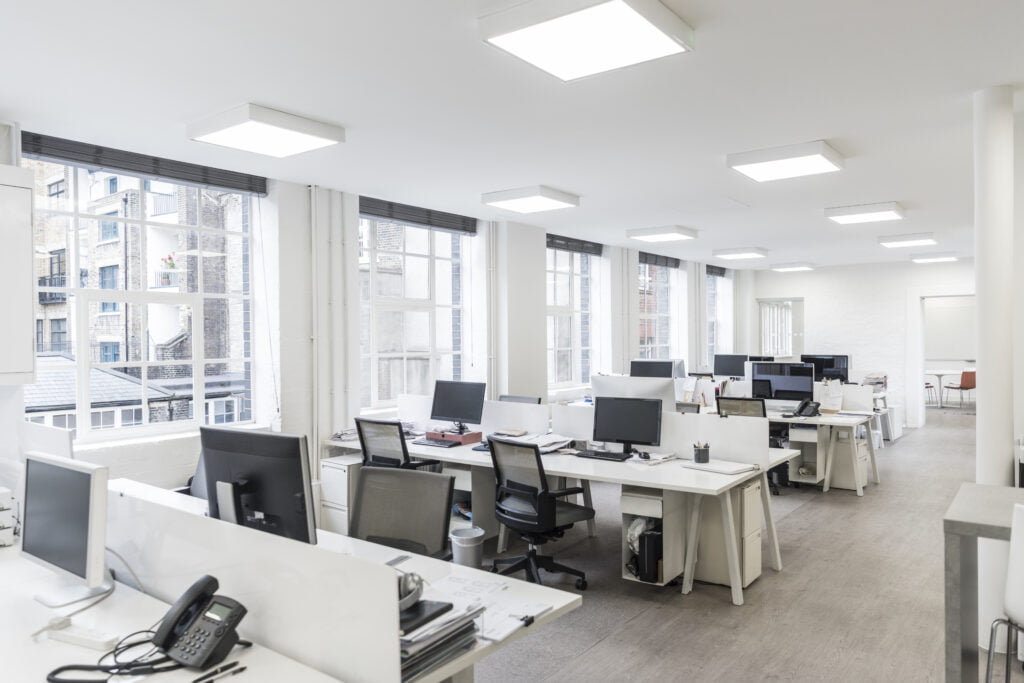We always get asked what the right color temperature and color rendering index (CRI) should be for various applications. Although there are rules of thumb that typically provide a positive outcome, color can be so subjective. With LED, your options have become almost limitless. Selecting the right color for your application can be pretty overwhelming.
In this article, We’ll address the first piece of the puzzle: selecting the right color temperature.
What is color temperature?
Color temperature (Correlated Color Temperature, or CCT, in lighting tech jargon) is essentially a gauge of how yellow or blue the color of light emitted from a light bulb appears. It’s measured in the Kelvin unit and is most commonly found between 2200 Kelvin degrees and 6500 Kelvin degrees.
Warm light sources, such as incandescent bulbs, have a low color temperature (2200-3000K) and feature more light in the red, orange, and yellow range. When you think of a warm color temperature, think of the warm, inviting glow of a fire in the fireplace or a nice high-end restaurant with classy dim lighting.
Cool light sources, such as some HID or fluorescent lamps, have a high color temperature (>4000K) and feature more light in the blue range. When you think of a cool color temperature, think of the crisp white or blue light of school hallways or hospitals.

Questions to ask when selecting the color temperature
1. What atmosphere are you trying to create?
Do you want to invite people to an intimate setting? Welcome people to a cozy lobby? Keep employees or students alert? Convey an energetic, clean atmosphere? You get the idea. Think about who your audience is and how you want them to feel when they are in your facility.
2. What kind of colors are you highlighting in your space?
This gets further into CRI, which we will address in the next article, but the color of the light still plays a role. If you have blue, silver, or white colors in your space, you may want to consider cooler color temperatures. If you have wood tones, golds, or reds, you may want to consider warmer color temperatures. Of course, there are exceptions to the rule, it’s often a good idea to select a color temperature that complements the color of the environment. It’s also worth noting that if you have neutral tones in your space, the lighting color can easily swing the feel of your space from warm and inviting to energetic and active.

Guide to selecting color temperature by application
Here is a simplified guide on what color temperatures typically work best by application.

How to select color temperature by application
As you can tell, cooler color temperatures (3500-5000K+) work well in environments where you want to promote alertness and calm. Similarly, warmer color temperatures (2200-3000K), especially those with high R9 values, work well with giving a sense of warmth and comfort or with rich, warm woods to bring out the detail in the grain.
There have also been tremendous improvements in the ability to make LED lighting dynamic through color tuning. Although this probably falls outside the scope of this article, color tunable LED can be a great option if your color temperature needs to be precisely dialed in or changed over time. Specific applications where color tuning particularly shines include settings where you would want to change the color temperature of your lighting based on time of day, seasons, or even specific product displays.
Conclusion
Even with the guidelines above, if I could stress one thing when it comes to selecting the right color for your space it would be to mock it up. Each LED has its own DNA and is unique. Each manufacturer has its own processes and designs. In short, not all 2700K or 4000K products look the same across different manufacturers, so get a few samples and install them in your space. There’s no substitute for seeing something in your own space with your own eyes.

